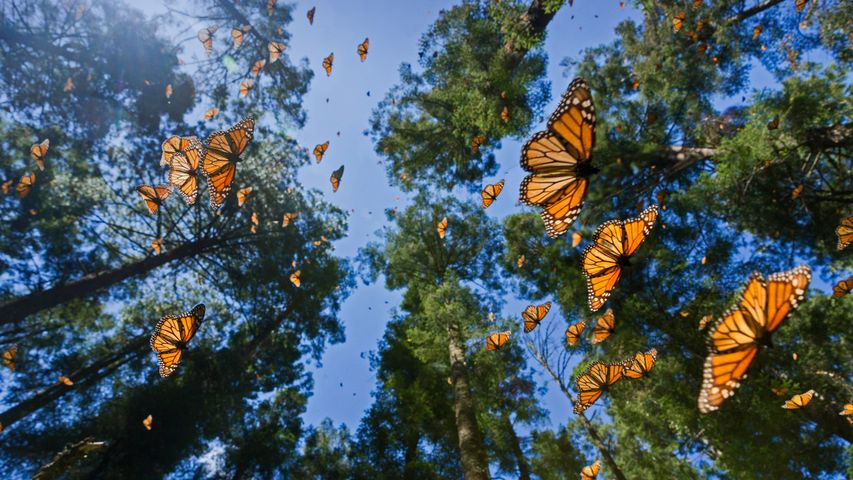Monarch butterflies at Pismo Beach, California
© Mimi Ditchie/Getty Image
Migration of the monarchs. Monarch butterflies, Pismo Beach, California
Today we're in Pismo Beach, California, to celebrate one of the best-known species of butterflies—the monarch. Western Monarch Day marks their seasonal migration to California's Central Coast from cold northern locations west of the Rocky Mountains.
A grove of eucalyptus trees at Pismo State Beach creates an optimal microclimate for the butterflies. Thousands arrive in the fall and roost through the winter until March, when they begin to fly north. After traveling a relatively short distance inland, the monarchs stop to mate and lay eggs on milkweed plants. The eggs will hatch after just a few days, eventually transforming into the next generation of adult butterflies to continue the trek. The annual cycle takes four or five generations of monarchs to complete, so the butterflies are following in the path most recently traveled by their great-grandparents (or so).
In recent years, Western monarch butterfly populations have suffered significant declines, due to climate change and loss of overwintering habitats. We can help protect and restore monarch butterflies by planting native milkweed (their primary food source) and other pollinator-friendly plants in our gardens and yards.
Related Images
Bing Today Images



 The Great Court of the British Museum, London, England
The Great Court of the British Museum, London, England
 Bodie State Historic Park, Mono County, California
Bodie State Historic Park, Mono County, California
 Palazzo Zuccari, Rome, Italy
Palazzo Zuccari, Rome, Italy
 Courtyard of the Maidens, Alcázar of Seville, Spain
Courtyard of the Maidens, Alcázar of Seville, Spain
 Sorano, Tuscany, Italy
Sorano, Tuscany, Italy
 Medieval city of Rothenburg ob der Tauber, Germany
Medieval city of Rothenburg ob der Tauber, Germany
 Mosaic façade in Registan Square, Samarkand, Uzbekistan
Mosaic façade in Registan Square, Samarkand, Uzbekistan
 Blue whale skeleton in the Natural History Museum, London, England
Blue whale skeleton in the Natural History Museum, London, England



